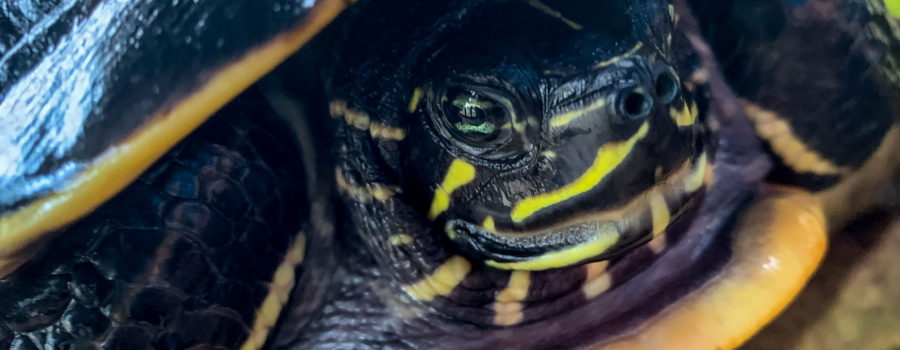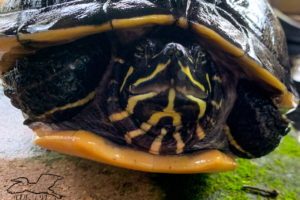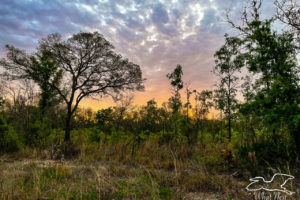The Amazing Numbers and Types of Turtles in Florida

The semi-tropical environment and numerous habitats available in Florida make it a great place for reptiles like snakes and turtles. Reptiles (and amphibians) are “cold blooded” meaning that their body temperatures are regulated at least in part by the environmental temperature. That’s a major reason why most of them like warmer areas. Besides warm weather most of the year, Florida is blessed with springs all over the place, and the spring water stays a constant 72 degrees, so the springs are another source of warmth for aquatic reptiles. It’s not a surprise, then, that Florida is the home to over 30 different species of turtles. Most of those species are aquatic, but there are several terrestrial species, too.

We have already talked about one of the land species in Florida, the gopher tortoise. It is the only tortoise in the group, but there are also two species of box turtle that live in Florida. They are the Florida box turtle and the Gulf Coast box turtle. Both are mainly found on land, but do occasionally like to soak in shallow water. However, they are not swimmers, so if you happen across one, don’t throw it in the water! Box turtles are pretty cool because they have hinged plastrons (bottom shells) that allow them to pull themselves inside and completely close their shells.

The vast majority of Florida’s turtles are aquatic and they can be separated into freshwater turtles and sea turtles. The Florida sea turtles are the loggerhead sea turtle, the green sea turtle, the leatherback sea turtle, and the Kemp’s Ridley sea turtle. The Kemp’s Ridley in only very rarely seen in Florida, and when it is, it is probably migrating through the area. It is also critically endangered, so if you do get to see one, count yourself extremely lucky. The other three sea turtles are frequent Florida visitors, and all of them are classified as vulnerable species. Interestingly, the sex of baby sea turtles is determined by the temperature in the area where the eggs are incubated. Scientists are finding that more and more sea turtles are being hatched as females due to climate change.

The freshwater turtles of Florida can be divided into soft shell turtles, snapping turtles, mud and musk turtles, pond turtles (including sliders and cooters), and terrapins. These guys make up the vast majority of Florida turtles and their classifications range from highly endangered to common. Some of them are easy to identify, but many of them, particularly among the pond turtles, are very similar in appearance, and some can even interbreed. Turtles are considered biological indicators and they can be used to monitor the health of their environment. They are also considered beneficial species in all of their ecosystems. Most turtles are omnivores and they help keep insect populations under control as well as cleaning up carcasses in the water (similar to vultures on land). They also eat vegetation, so they can disperse seeds throughout the environment and they help to control plant over growth. Several types of turtle eat large amounts of algae that, if not kept in check, will decrease the water oxygen levels. And the really cool thing about turtles is that they cause no kind of harm at all! So if you come across turtles in your wanderings live and let live. We (humans) are their main enemies for so many reasons.





Recent Comments